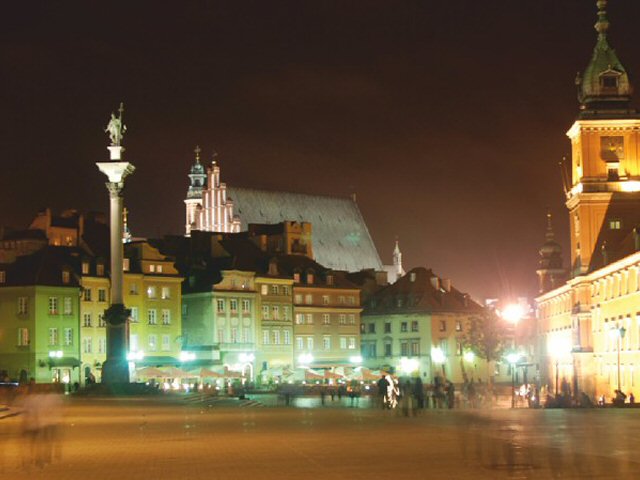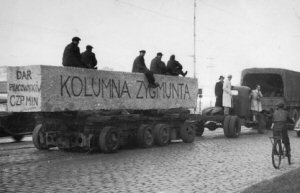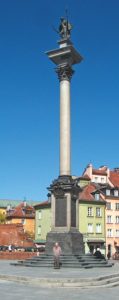THE KING STANDS AT STRZEGOM

22 July 2014 will mark 65 years since the re-siting of the Sigismund Column at Zamkowy Square in Warsaw
Every capital city in the world has something distinctive. Something that always appears on postcards, in films and in photographs. Vienna has St Stephen’s Cathedral, Paris has the Eiffel Tower, Prague has Charles Bridge. And Warsaw has the Sigismund Column. When visiting a city, we usually get rather vague information about its history, and in the case of the Column, it is very interesting.
The Column of Sigismund III Vasa was founded by his son, Wladyslaw IV Vasa, in 1644, who commemorated his father – the king who had moved the capital of Poland from Cracow to Warsaw. The first marble monolith for the column’s core did not even leave the Jerzmaniec quarry, as it cracked before being transported. The first shaft of the 22-metre high column was made from a single block of Chęciny marble obtained from the Czerwona Góra quarry near Chęciny.
After more than 200 years, the monument underwent a major restoration, during which the Union-Bau Gesellschaft of Vienna replaced the marble of the column’s shaft with granite from Italy. In this form the Column survived until September 1944, when it was destroyed by German troops.
Folowing World War II, in 1948, a collection for the reconstruction of the monument was initiated. Not only the figure of the king – left hand, sabre, cross – but also the very shaft of the column needed renovation. The search began for a quarry where it would be possible to excavate such a large monolith in its entirety – 11.0 x 1.15 x 1.15 m.

And it was in Strzegom that a 15-metre-long block was found corresponding to the cross-section searched for. The job of excavating the monolith without causing any damage to it was quite a challenge. The burden of this task was borne by the Zakłady Kamienia Budowlanego stone plant in Grabina. As Bogusław Skolak, then an employee of the plant, recalls, the plant had no suitable equipment for such a task at that time (cranes, loaders), and the monolith, which was stripped using gunpowder, weighed 185 tons! Processing the monolith, which was mostly done by hand on the site of the quarry, reduced its weight to about 40 tons.

Extracting the block from the quarry and loading it onto railway wagons was another challenge. But Strzegom’s quarrymen could cope with this task as well. Together with the column, two 10-ton blocks were also excavated and transported to Warsaw, which served as a base for the column. In total, the excavation, processing and transport took up about three months. In the following months, the stone block was given its proper shape in the Warsaw stone workshop by engineer Julian Fedorowicz. On 22 July 1949 the Sigismund Column returned to its place in front of the Royal Castle.
In 1974, as a result of lowering the Zamkowy Square in Warsaw, it was necessary to add two additional granite steps to the column. This was again carried out by Zakłady Kamienia Budowlanego. Today it seems to be an uncomplicated task, but 40 years ago it required some effort tracing a template of the existing steps and the manufacturing two new ones.
A further overhaul of the monument was carried out in the 1990s, when the granite core of the column did not require any major conservation work to be done.
Source: Kurier kamieniarski
Author: Daria Pigulla | Published: 8.1.2014
